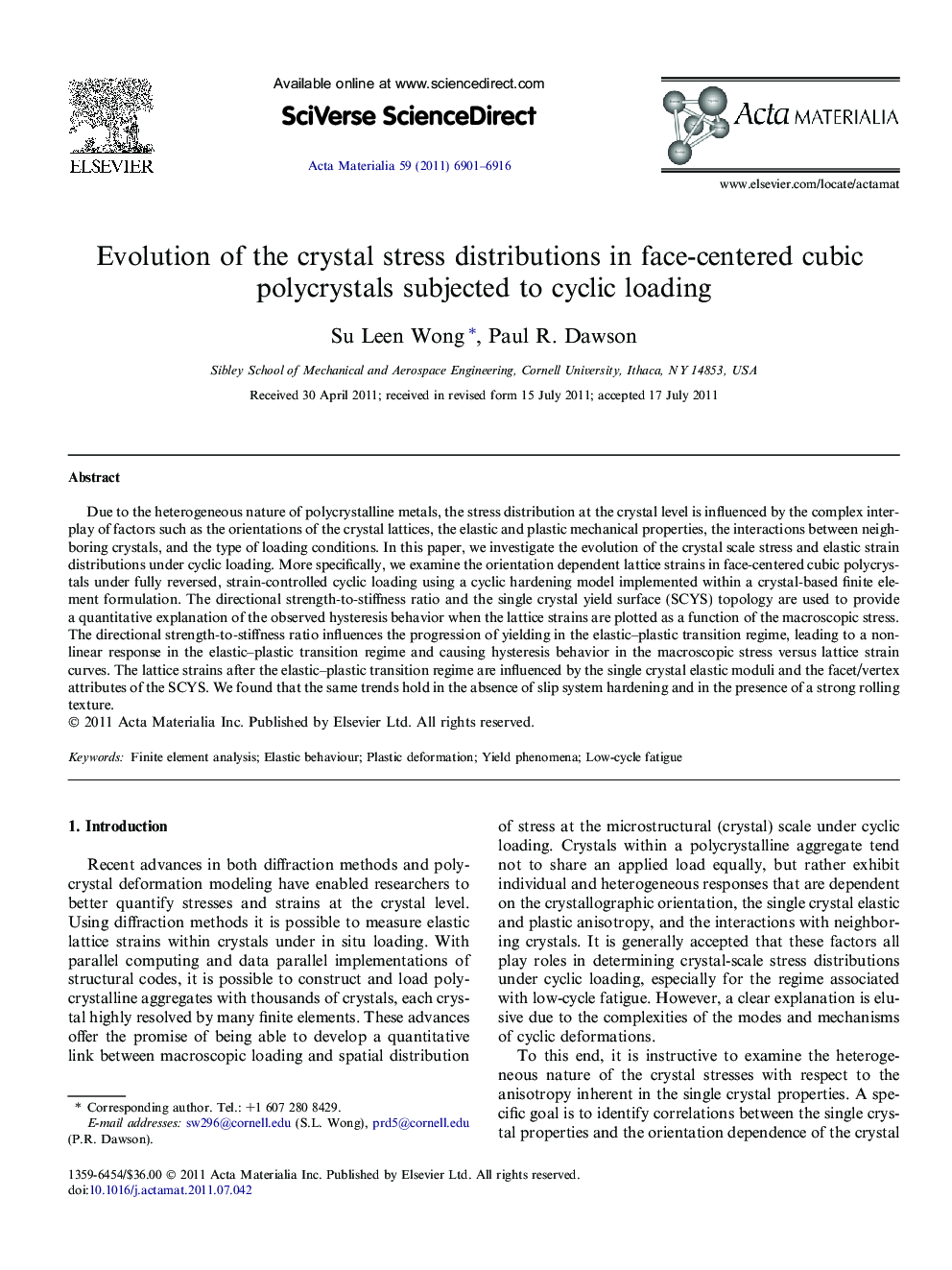| Article ID | Journal | Published Year | Pages | File Type |
|---|---|---|---|---|
| 1447258 | Acta Materialia | 2011 | 16 Pages |
Due to the heterogeneous nature of polycrystalline metals, the stress distribution at the crystal level is influenced by the complex interplay of factors such as the orientations of the crystal lattices, the elastic and plastic mechanical properties, the interactions between neighboring crystals, and the type of loading conditions. In this paper, we investigate the evolution of the crystal scale stress and elastic strain distributions under cyclic loading. More specifically, we examine the orientation dependent lattice strains in face-centered cubic polycrystals under fully reversed, strain-controlled cyclic loading using a cyclic hardening model implemented within a crystal-based finite element formulation. The directional strength-to-stiffness ratio and the single crystal yield surface (SCYS) topology are used to provide a quantitative explanation of the observed hysteresis behavior when the lattice strains are plotted as a function of the macroscopic stress. The directional strength-to-stiffness ratio influences the progression of yielding in the elastic–plastic transition regime, leading to a nonlinear response in the elastic–plastic transition regime and causing hysteresis behavior in the macroscopic stress versus lattice strain curves. The lattice strains after the elastic–plastic transition regime are influenced by the single crystal elastic moduli and the facet/vertex attributes of the SCYS. We found that the same trends hold in the absence of slip system hardening and in the presence of a strong rolling texture.
